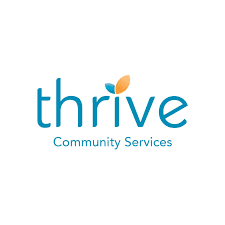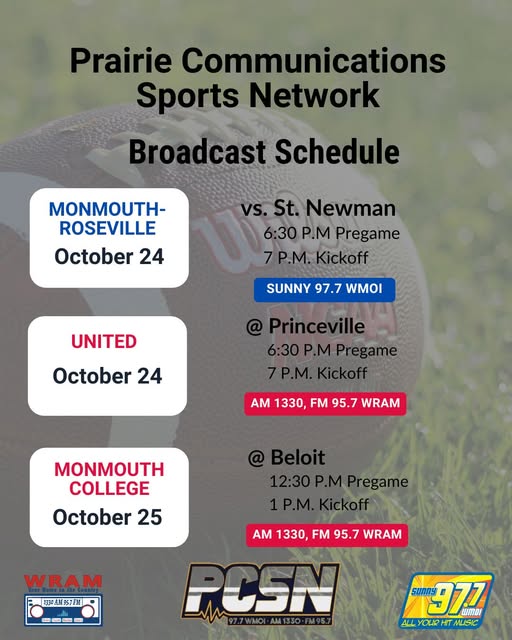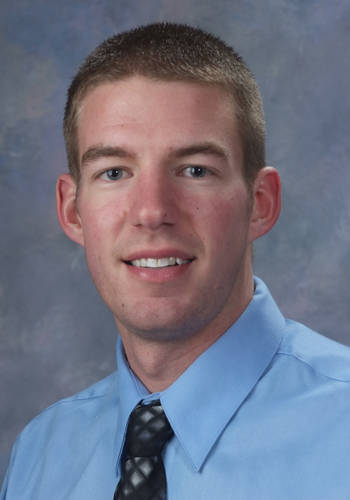For a few days this summer, the Monmouth College campus was turned into the solar system.
Students who were participating in the inaugural Monmouth-Illinois Central College STEM Summer Scholars Program created a model solar system on campus to help make calculations of the distance between the planets.
Looking north from Broadway, the solar system’s first four planets – Mercury, Venus, Earth and Mars, were in the Wallace Hall Plaza or not far from it. The students showed that the fifth planet from the sun, Jupiter, is roughly the distance from Broadway to the Stockdale Center.
Then there’s still plenty of distance to cover (a quad, Hewes Library and the sprawling April Zorn Memorial Stadium) to reach Saturn, Uranus, Neptune and the edge of the solar system at Euclid Avenue. In other words, if the distance from the sun to the earth is treated as one astronomical unit, there are an additional 59.76 units from Earth to the solar system’s edge.
Two years ago, Monmouth received a $470,666 grant from the Howard Hughes Medical Institute as part of its Inclusive Excellence initiative. One of the proposed offshoots of that grant was an opportunity for students from ICC in East Peoria to come to Monmouth’s campus for an immersive program that would introduce them to work in science, technology, engineering and math, popularly known as STEM.
During the four-week program, led by a Monmouth faculty member and student mentor, the ICC students participated either in “Investigating the Behaviors and Biomechanics in Mega Arthropods” or “Terrible Secrets of Space.”
‘It went really, really well’
Physics professor Michael Solontoi and biology professor Kevin Baldwin worked with the ICC students.
“It went really, really well,” said Solontoi. “We learned a whole lot about how to make the next few years of this program really something special.”
Solontoi’s group included four ICC students and Monmouth student mentor Jesia Choity ’27 of Bangladesh.
“We covered a potpourri of astronomy topics, ranging from outreach type of things, to creating a model solar system, to analyzing data from the Hubble Telescope,” said Solontoi.
Making calculations to set up a model solar system on campus was part of the idea behind the program, said Monmouth faculty member Eric Engstrom, who worked on the grant proposal.
“Students (are) involved in a real research project, getting data and doing some math,” he said. “They get to see what real research is like. Some students may have never experienced that.”
Math is part of the equation because of the hurdle it traditionally represents for interest in STEM disciplines.
Not only at Monmouth, but throughout the nation, colleges and universities will use the HHMI funding to make a concerted effort to attract underrepresented populations.
“They’re not thinking ‘That’s for me,” said Engstrom of studying STEM and pursuing related careers. “They don’t see role models in STEM who look like them, who talk like them. We’re trying to counteract that at ICC and send the message to students ‘You can actually do this.’ We want to create a pathway for students starting there.”
Slaying the dragon (fly)
Baldwin’s group, which included three ICC students and Monmouth student member Isaac Guadarrama ’26 of Beardstown, Illinois, made frequent trips to the college’s LeSuer Nature Preserve to study dragonflies and damselflies. Early on, they even constructed an instrument to help with their data collection during their statistics-focused research.
Coming from a community with a similarly diverse ethnic makeup as Monmouth, Guadarrama said he could relate to why the college’s HHMI-funded program is so important.
“I understand that opportunities aren’t always given to people who are less fortunate,” said Guadarrama, a lead mentor on campus this year who said he was drawn to the new program for an opportunity to enhance those skills.
Two of the students in his group were Hannah Candler and Mia Doty. They were joined by Kyheim Jones.
“This was a good opportunity for community college students to do research,” said Doty. “One of my ICC professors recommended this to me, and I really enjoyed it. It was a great learning experience.”
“We felt super welcomed here, and it was kinda cool being the guinea pigs for this program – the pioneers,” said Candler. “The first week was challenging, just learning the lay of the land, but we found a rhythm, and it was a lot of fun. We didn’t necessarily uncover any new information about dragonfly behavior, but it was still good to gain this experience and be the people out there getting your hands dirty, writing down your observations.”
***Courtesy of Barry McNamara, Monmouth College***
















